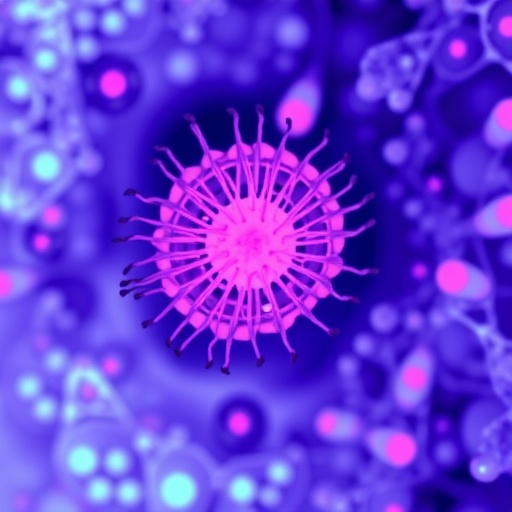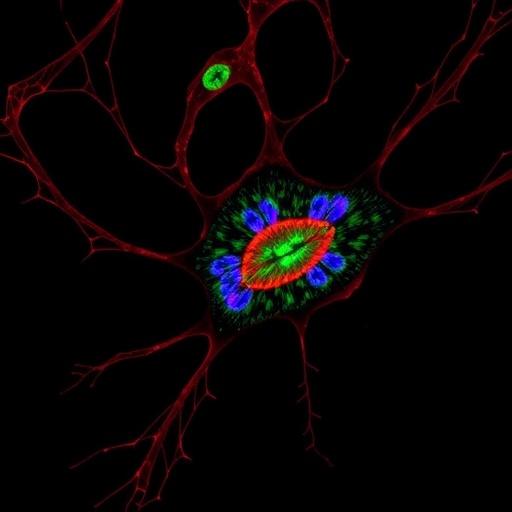
A groundbreaking study emerging from the National Institutes of Health (NIH) sheds new light on the complex interplay within the breast microenvironment and its critical role in the development and progression of aggressive breast cancer. Investigators have identified a distinct pattern of alteration in the connective tissues of the breast—referred to as stromal tissue—that strongly correlates with heightened risks of aggressive breast cancer among women with benign breast disease, as well as diminished survival outcomes in patients diagnosed with invasive breast cancer. This structural transformation, termed “stromal disruption,” heralds a new frontier in oncology research, positioning the stromal microenvironment as a pivotal factor in cancer biology that could revolutionize early detection and therapeutic interventions.
At its core, stromal disruption encompasses multifaceted changes in the architectural framework and cellular makeup of the breast’s supportive connective tissues. These changes appear to create an environment conducive to tumor initiation and accelerated progression. Unlike tumor cells themselves, stromal tissues have traditionally been overlooked in cancer diagnostics; however, the NIH researchers provide compelling evidence that disruptions within this compartment can serve as a predictive biomarker. This innovative biomarker holds promise for both risk stratification in women with benign breast conditions and prognostic assessment in breast cancer patients, offering a powerful tool to anticipate aggressive disease trajectories.
To unveil the subtle yet significant stromal alterations, the research team employed advanced machine learning algorithms, analyzing an unprecedented dataset of over 9,000 breast tissue samples. This collection spanned healthy donors, individuals with benign breast disease, and patients diagnosed with invasive breast cancer. The computational approach enabled the detection of nuanced stromal patterns imperceptible to traditional histopathological evaluation, underscoring the transformative impact of artificial intelligence in biomedical research. This high-throughput, algorithm-driven analysis exemplifies how cutting-edge technology can be harnessed to decode the complex tissue microenvironment.
Intriguingly, in breast tissue from healthy women, stromal disruption was not randomly distributed but correlated with several epidemiological risk factors traditionally implicated in breast cancer aggressiveness. These include younger age at tissue donation, multiparity (having two or more children), self-identification as Black, obesity, and a positive family history of breast cancer. The convergence of these risk factors through a common stromal pathway suggests a unifying biological mechanism by which environmental and genetic factors might synergize to perturb the breast microenvironment, thus elevating cancer risk even before malignant transformation occurs.
The study’s findings in women with benign breast disease are particularly striking. Among these individuals, significant stromal disruption measured in biopsy samples was associated with an elevated probability of transitioning to aggressive breast cancer phenotypes. Moreover, this population exhibited a more rapid progression timeline in comparison to those with minimal or absent stromal changes. Such insights are invaluable for clinical decision-making, potentially guiding closer surveillance or preemptive therapeutic interventions tailored to patients exhibiting high-risk stromal profiles.
In women already diagnosed with invasive breast cancer, stromal disruption correlated strongly with more aggressive tumor characteristics. This association was especially pronounced in estrogen receptor-positive (ER-positive) breast cancer cases, which account for the majority of breast cancer subtypes. Notably, patients with heightened stromal abnormalities faced poorer survival outcomes, emphasizing the clinical relevance of the stromal microenvironment in influencing disease progression and therapeutic response. This could pave the way for adjunctive treatments that target stromal components alongside traditional cancer therapies.
The biological underpinnings driving stromal disruption appear to be multifactorial. The researchers highlight chronic inflammation and wound-healing processes as key contributors to this phenomenon. Both are known to modulate the extracellular matrix and stromal cell behavior, potentially creating a pro-tumorigenic niche. This expands the paradigm of cancer from a merely epithelial-centric view to one inclusive of dynamic stromal involvement, implicating tissue remodeling and immune microenvironment factors in tumor biology.
Importantly, stromal disruption as a biomarker offers a cost-effective and easily accessible means of risk assessment. Unlike molecular profiling techniques that require specialized infrastructure and incur high costs, stromal evaluation can be implemented widely, including in resource-limited settings. This democratization of cancer risk assessment tools could have profound implications for global health equity, particularly in regions where breast cancer mortality remains disproportionately high due to late diagnosis and limited treatment options.
Beyond diagnostics, this research opens avenues for innovative prevention strategies focused on mitigating stromal disruption. Lifestyle modifications aimed at reducing chronic inflammation, such as diet and exercise, alongside pharmacological interventions including anti-inflammatory agents, might prove effective in preserving stromal integrity. These approaches could complement existing preventive measures, ushering in a more holistic model of breast cancer risk management.
The implications of stromal disruption extend into therapeutic paradigms as well. Targeting the tumor microenvironment, particularly altered stromal components, could enhance treatment efficacy and overcome resistance mechanisms. Future clinical trials designed to evaluate the benefit of stromal-targeted therapies, in combination with conventional chemotherapeutic and hormonal agents, are anticipated. Such integrative strategies have the potential to improve survival outcomes and quality of life for patients facing aggressive breast cancer.
This NIH-led study represents a significant leap forward in understanding the etiology and progression of breast cancer. By elucidating the mechanisms and consequences of stromal disruption, researchers have illuminated a previously underappreciated dimension of cancer pathology. Ongoing investigations are essential to translate these findings into clinical practice, including the development of standardized protocols for stromal assessment and validation of targeted interventions.
Published in the May 14, 2025 issue of the Journal of the National Cancer Institute, this research highlights the power of integrating epidemiological data with cutting-edge computational methodologies to tackle complex biomedical challenges. As the scientific community continues to unravel the intricacies of the tumor microenvironment, discoveries such as stromal disruption reinforce the paradigm shift toward precision oncology, where the microenvironmental context is as critical as the tumor itself.
In summary, the identification of stromal disruption as a biomarker heralds new possibilities for early detection, risk stratification, and treatment of aggressive breast cancers. Its integration into clinical workflows promises to transform preventative and therapeutic approaches, ultimately aiming to decrease breast cancer morbidity and mortality worldwide. With stromal biology emerging as a frontier in oncology, this study lays a foundation for future innovations to improve outcomes for women at risk and those battling breast cancer.
Subject of Research: Stromal Tissue Alterations in Breast Cancer Risk and Outcomes
Article Title: Unraveling the Role of Stromal Disruption in Aggressive Breast Cancer Etiology and Outcomes
News Publication Date: 14-May-2025
Web References:
https://www.cancer.gov/
https://dceg.cancer.gov/
https://www.nih.gov/
Keywords: Cancer biology, breast cancer, stromal disruption, tumor microenvironment, biomarkers, machine learning, epidemiology, risk factors, inflammation, estrogen receptor-positive breast cancer, prevention, therapeutic targets
Tags: aggressive breast cancer survivalbenign breast disease risksbreast microenvironment studycancer diagnostics innovationsconnective tissue alterationsearly detection of breast cancerNIH breast cancer researchpredictive biomarkers for breast cancerstromal disruption in oncologystromal tissue biomarkertherapeutic interventions in breast cancertumor initiation factors





